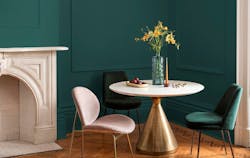An emerging architectural movement puts the biophilia hypothesis—that humans seek out and need to feel a connection to nature and other living organisms to mentally and physically prosper—into design practice by bringing outdoor natural elements indoors.
Indoor tree houses, rooftop parks, ponds, and orchards are just some examples of biophilic design’s growing prominence in the offices and work spaces of companies such as Google, Facebook, Amazon, and Microsoft, and biophilic design is now finding its way into residential projects as well.
In a report about the relationship between the design of built spaces, nature, and human biology, environmental consulting firm Terrapin Bright Green explains that biophilic design “can reduce stress, improve cognitive function and creativity, improve our well-being, and expedite healing,” adding that the forecasted increase of urbanization over time highlights the commensurate growing value of this design method.
But incorporating natural wellness into a home’s design isn’t restricted to its interior. In October 2014, the International Well Building Institute (IWBI) launched the Well Building Standard, aimed at turning structures—from the way in which they’re built to what they contain—into “health intervention tools” for improving and enhancing residents’ comfort, health, and wellness.
Additionally, manufacturers are increasingly inspired by biophilic design and foresee a lasting impact on homeowners and housing professionals. When formulating its 2019 Color of the Year called Night Watch (above), global paint supplier PPG Industries sought to convey nature’s significance, as well as “the overarching [cultural] mood of togetherness, inclusiveness, and community,” with a holistic approach.
PPG senior color marketing manager Dee Schlotter says that nature itself is the site of greatest holistic restoration, and that channeling that into the home, where “there is a need for meditation and restoration in a very combative world,” can be both a rebellious and necessary act.

